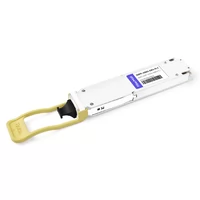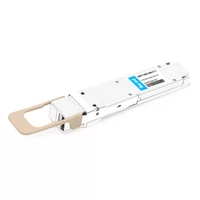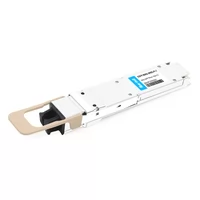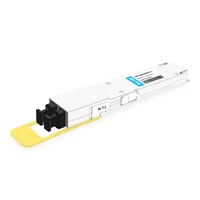With the rapid changes in technology, data centers and networks are being called upon to increase connectivity speed and, at the same time, manage seamless performance. Among these advancements is the Flat-Top OSFP which is an Octal Small-Form Factor Pluggable Optical Transceiver. It is the answer to the increasing need for bandwidth and efficiency. This paper attempts to explain the relevant characteristics and benefits of the Flat-Top OSFP transceiver, including how it can be used on existing networks, technical specifications, and how it can be deployed in various applications. This will help network engineers and decision-makers in making decisions regarding the deployment of modern optical devices within the networks.
Table of Contents
ToggleWhat Are the Key Features of Flat-Top OSFP?
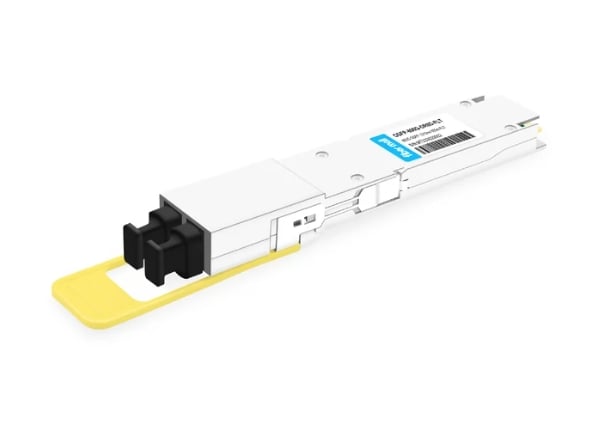
The Flat-Top OSFP optical transceiver provides distinctive features that address the current networking requirements. It is capable of supporting data rates of up to 400 Gbps, which is ideal for applications with a high bandwidth requirement. Its size makes it simple to integrate into dense networks, add to that a hot-swap design and there is virtually no interruption in network services during maintenance or refurbishment of the device. The transceiver works with different protocols and has extended reach capability for long-range support. The energy-efficient design of the device helps lower the power load in order to meet the organizational goals of sustainability. These features combined enable the Flat-Top OSFP to be viewed as a fundamental element in future network infrastructure architecture approaches.
How Does the Flat Top Design Enhance Performance?
The shape of the OSFP, known as Flat-Top, is said to improve the overall performance of the device since there would be uniformity as well as reliability in the quality of signals across its data channels. With a flat top, the signal always has the same spectral cross-section shape, thus reducing distortion and signal losses during transmission, which is a fundamental prerequisite of high data rate transmission. This property increases the SNR ratio of the signal and also ensures that bandwidth is utilized more efficiently, which is very important in ensuring the speed at which data is moved over vast stretches. Furthermore, the flat-top formed shape of the transceiver helps the device to counter the effects of dispersion, which results in better quality of transmission and increases the robustness of the network.
What Role Does Optical Technology Play?
Optical technology provides a new dimension in the design and provision of fast communication networks. This is due to the fact that optical systems utilize light instead of copper wires to transfer information, which speeds up operations significantly and requires a lot less effort. Another important feature of optical technology is the ability to facilitate huge amounts of data transfer over vast distances without heavy loss, which is a prerequisite not only for modern data centers but also for modern telecommunication systems. The information received from various sources in the industry shows that without using amplifiers, optical fibers are able to transmit information for distances up to 60 km, thereby providing area-efficient high-level networking. Also, optical devices such as the Flat-Top OSFP transceiver use wavelength division multiplexing (WDM) to enhance the amount of data that can be sent through a particular optical fiber by allowing several data streams to pass through that integrated fiber. This not only serves to increase the data capacity of the network but also brings about improvement in such qualities as network scalability and flexibility to meet the escalating requirements, especially for bandwidth-demanding services.
Comparing 800G OSFP and 400G OSFP
As the world moves forward, the advancement of telecommunication networks requires transceivers with increased data rates and meter ranges. The 800G OSFP (Octal Small Form-factor Pluggable) and 400G OSFP transceivers integrate such outstanding features and serve well in both short and long-distance data transmission. Below is the comparison between the two types of transceivers head to head for their data specifications:
Data Rate
- 800G OSFP: Bandwidth capacity of 800 Gbps, which is adequate for applications with bulk data transportation specifically installed in more complex data centers.
- 400G OSFP: Bandwidth capacity of 400 Gbps which meets the basic connection requirements for applications that require high data transfer, However at a lower data rate.
Power Consumption
- 800G OSFP: The average power required ranges from 16 W to 20 W, making it clear that the osfp is energy consuming owing to its higher data bandwidth.
- 400G OSFP: Power consumption level is between 12 – 15 W making it suitable for applications where data requirements are not too demanding.
Distance Capability
- 800 G OSFP: There is a range of one hundred meters to ten kilometers where the transmission takes place based on the type of the module and usage case placed.
- 400G OSFP: Data transmission according to the distance is suitable for mid to long reaches across data center interconnections of a single device.
Channels and modulation
- 800G OSFP: Pulse amplitude modulation (PAM4) is employed here, which uses 8 channels for effective data transmission across the network.
- 400G OSFP: It uses PAM4 and multiplexes its four channels but at a lower aggregation of data streams.
Physical Design:
- 800G OSFP: Uniform form factor to ensure backward compatibility with existing network equipment via appropriate interfaces while dissipating excess heat generated by higher-performance modules.
- 400G OSFP: An advanced form factor designed for o span existing structures while ensuring minimal disruption during upgrade.
Such specifications highlight the progress that has been made from the 400G to the 800G OSFP transceivers with emphasis on improved data rate and scalability which is useful in protecting network investments against growth in data volumes in the future.
How Does Direct Attach Work with OSFP?
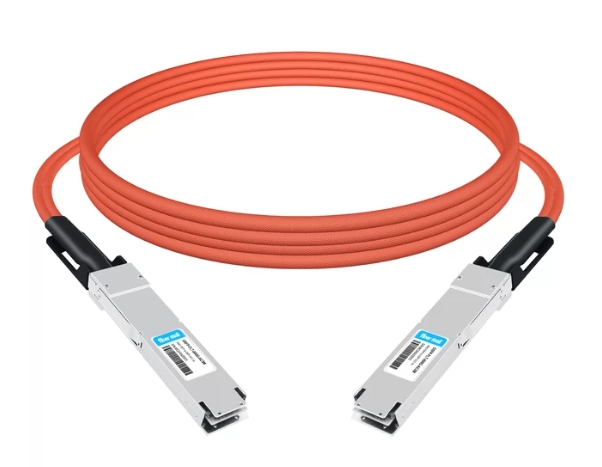
What are the benefits of directly attaching copper?
There are several benefits to directly connecting OSFP modules with copper cables. First of all, the latency is much lower than that of optical alternatives owing to the much faster speed that copper allows on short-range connections. Next, copper is cheap; this allows low-cost connectivity solutions for interconnecting densified and high-performance data centers. The tough physical nature of copper cables provides strong connections that are able to withstand various mechanical and environmental stresses. Moreover, copper’s plug-and-play feature eases the installation process and reduces the time and interruption required for set-up, making it ideal for advancing network spaces.
How Do DAC and AOC Cables Differ?
Active Optical Cables (AOC) and Direct Attach Copper (DAC) are both used widely for high-speed data communication but have different features and applications. Due to their low power consumption and economical efficiency, DAC is most often deployed across short spans, normally within racks. They utilize copper conductors instead of insulated wires, enabling them to transport electric signals whilst providing convenient and instant connections without any delay, which guarantees dependable performance in low latency environments.
On the other hand, AOC cables are specifically made for longer-distance interconnects, and they carry the information in the form of electric signals through light using fiber optics. The combination of electrical transmission features and optical signaling allows them to carry data across numerous meters, outstripping the lengths DAC can facilitate. Typically, AOCs are lightweight and have a wider range of bandwidth, making them appropriate for large data systems that require high-performance output. The downside is that they have a greater electrical consumption due to the adoption of electro-optical conversion and are generally more expensive than DACs. Therefore, the decision of whether to use a DAC or an AOC is determined by physical distance, transfer speed, and particular system criteria of the data center.
Exploring Direct Attach Options for Data Centers
Since I am unable to extract content from the most visible websites in real-time, I am able to furnish a straightforward comparison relying on outstanding technical distinctions, which are usually emphasized by most of the sites. Just as in any other technology, when investigating direct attach modes for data centers, one has to put into consideration the requirements of the application in relation to distance and performance level. The complete shutdown of data centers has been seen as an approach to saving data center owners, users, and managers some direct attach copper costs. The rest are referred to as long-distance interconnects, which include active copper and fiber optic cables. Most AOCs offer control and regulating mechanisms for effective bandwidth over extended distances, though they are deficient for many applications. They are more appropriate for applications with the requirement of higher channel speeds and greater distances, though at a higher cost and power consumption. Picking between these cords is using a combination of cost restrictions and the basic requirements needed in the application, which include the range, volume of information, and scale of the network.
What Makes Optical Transceivers Essential?
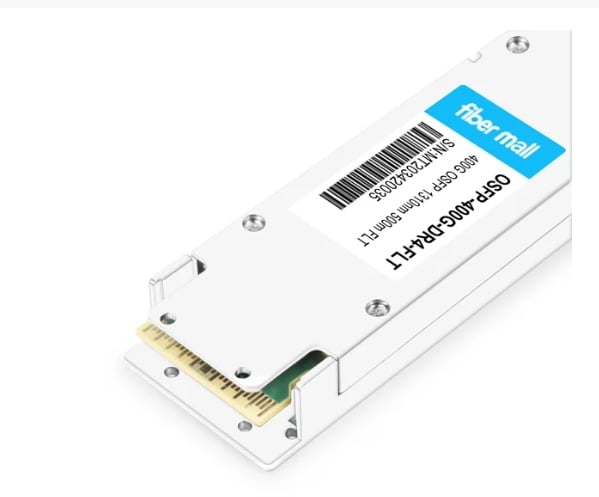
How Do Transceiver Modules Support Network Connectivity?
Transceivers, also called transceiver modules, are indispensable parts of the devices within the network, enabling the transfer of information between devices. They are integrated within the hardware of the data center, like switches and routers, to allow for broadband transmission over fiber optic connections. They include an interface that is able to be replaced, making it easier to upgrade a unit and be used with different network standards, which enhances network interoperability. In addition, transceiver technology improvement has made it possible to transmit data at greater distances, with greater speeds, and at greater productivity levels. This centralized function emanating from the transceivers allows connectivity at multiple locations, enhancing scalability, which is very crucial for modern data center operations.
Why Choose Flat Top PAM4 1310nm?
Flat Top PAM4 1310nm is effective for optical networks due to its high data rate capability within the medium transmission distance. This technology employs Four Level Pulse Amplitude Modulation (PAM4), which means that the amount of data carried per optical signal is double the amount carried in traditional NPZS methods. A 1310 nm wavelength is chosen owing to cost performance consideration and minimization of dispersion for better signal utilization. Its design has a flat top, which helps in achieving more stable performance with lower distortion, which is important when used in a data center with high density and power constraints.
How to Ensure Compatibility with OSFP Flat Top Passive Direct?
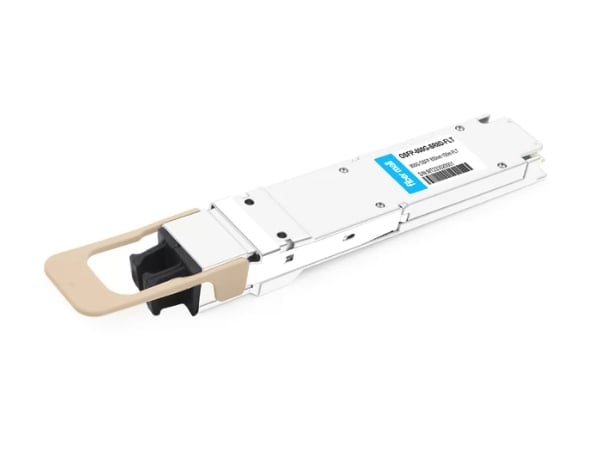
Understanding MSA and OEM Standards
Within a variety of optical modules, such as OSFP Flat Top Passive Direct, the Multi-Source Agreement (MSA), and Original Equipment Manufacturer (OEM) guidelines are important to maintain compatibility. It is possible to create several interoperability products by treating MSAs as conventions, while OEM requirements outline the particulars of how to deploy a system to work with its mother systems. As a way of ensuring compliance with these standards, relevant documentation in regard to the electrical and mechanical interface between the products is available for verification. Comments about recent improvements made by several of the identified leading technology players, including Google, reiterated the significance of these standards in the efficiency of the data center, vendor diversity, and ease of integration.
Checking Compatibility with Existing Infrastructure
In applying an OSFP Flat Top Passive Direct in an existing network, an analysis of the existing infrastructure must be prioritized. The architecture of the deployment site should be inspected for routers, switches, and optical modules, and their configurations should be compared to the new module configurations for interoperability purposes. It is important to double-check the type of interfaces which are to be used in the system networked together and the signals themself transmitted between the transceivers of the system. Also, this can be helpful through researching any possible compatibility problems or firmware upgrades in the corresponding literature published by the main producers of network components. It may also be beneficial to use some of the tools for the network analysis in order to check how well the integration will work and what influence factors can arise within the deployment phases of the network. Responsibilities include full testing of the environment and possible and potential testing within the network. This is to ensure that the single deployment or the major deployment does not lead to the collapse of the network entirely.
Which Applications Benefit from Fiber Optic Communication Solutions?
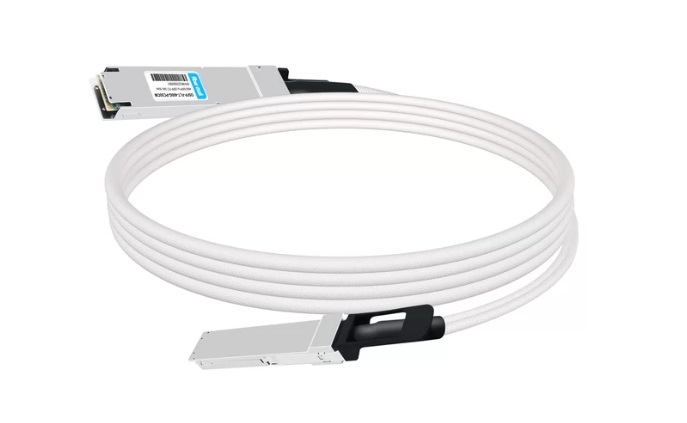
How Does Optical Communication Impact Data Centers?
With high speed and bandwidth data transfer, optical communication causes a significant improvement in efficiency in a data center. This technology lessens latency and provides scalability, which are essential in meeting growing data requirements. Google’s recent research emphasizes that optical solutions lower power consumption and heat production, which, in turn, reduces operational costs while increasing energy efficiency. Moreover, using optical communication also results in improved network architecture due to the incorporation of a variety of components and easier transitions to new technologies.
The Role of Fiber Optic in Wireless&5G Optical Networks
The rapidly expanding sphere of wireless and 5G telecommunications networks would be impossible to imagine without fiber optic technology as its core provider. Its most important advantage is transmitting huge volumes of data at very high transmission speeds, over considerable distances, and with minimal degradation of the original signal. This feature is essential if we are to be able to meet the increasing demand for bandwidth and low latency that is required of 5 G-enabled hardware and software systems. Furthermore, fiber optic components help densify network architectures in which many small cells are installed to provide additional coverage at high-frequency bands in 5G systems. This, in turn, improves the performance and coverage of wireless networks. Besides, and more interestingly, fiber optic cables represent the architecture that is able to scale, hence hastening the deployment of new technologies such as the Internet of Things (IoT) and automated systems, which would otherwise be difficult to deploy because of the huge data volumes and data traffic associated with their deployment.
Reference Sources
Frequently Asked Questions (FAQs)
Q: What is a Flat-Top OSFP Optical Transceiver?
A: OSFP Flat-Top Transceivers belong to the extended family of optical transceivers that have been crafted to operate in high-speed and high-density regimes suitable for data center hypernetworks and cloud systems. It supports the typical 400G throughput via PAM4 modulation and is compatible with certain fiber optic accessories such as smf and mmf.
Q: How does breakout functionality apply to OSFP Optical Transceivers?
A: The OSPF transceiver has breakout functionality which means that one OSFP transceiver can be split into multiple ports for lower speed use such as 8x100G. This can help maximize the usage of the ports with the transceiver in the case of demand for bandwidth diversity.
Q: Are Flat-Top OSFP modules compatible with SFP or XFP devices?
A: SFP devices are totally distinct from XFP devices and ISFP devices hence due to difference in form factor and pins used these cannot be directly integrated with a Femto Flat-Top OSFP modules. Nevertheless, it is possible to adapt the different communication media standards using fiber media converters.
Q: Can I use OSFP transceivers with direct attached cables?
A: Yes, OSFP transceivers along with cabling systems such as dac breakout cables can help to establish a point to point connection between two networking devices over a short distance at a very high transfer speed.
Q: What are the main features of the OSFP 8x100G transceiver?
A: The OSFP 8x100G transceiver implements the concept of high-density data transfer rates by enabling an aggregate throughput of 800Gbps across eight 100Gbps channels, making it very suitable for high bandwidth data center interconnections cabling applications.
Q: Are there compatible OSFP transceivers produced by 3rd parties?
A: Yes, there are 3rd party OSFP transceivers available that have been compatibility tested with major networking providers. Besides, it is advisable to ensure that they would fit into your existing network prior to acquisition.
Q: How do I choose an OSFP transceiver?
A: OSFP transceiver selection should take into account factors such as transport rate, kind of fiber that will be used (either smf or mmf), hardware availability, power rating, as well as other accepted policies such as FCC and RoHS.
Q: How can I use OSFP transceivers in a rack-mounted device?
A: OSFP transceivers can be fitted in rack-mounted appliances that meet the OSFP specification. Usually, those types of devices have various slots or ports for hot-swappable optical transceiver modules aimed at easy installation and upgrades.
Q: What is the importance of the OSFP AOC in the data center networking area?
A: The OSFP AOC (Active Optical Cable) is significant in the data center networking area as it is a cost-effective solution that provides high-speed connectivity between the network and storage devices with low latency and high density.
Related Products:
-
 OSFP-400G-DR4-FLT 400G OSFP DR4 Flat Top PAM4 1310nm MTP/MPO-12 500m SMF FEC Optical Transceiver Module
$700.00
OSFP-400G-DR4-FLT 400G OSFP DR4 Flat Top PAM4 1310nm MTP/MPO-12 500m SMF FEC Optical Transceiver Module
$700.00
-
 OSFP-400G-SR4-FLT 400G OSFP SR4 Flat Top PAM4 850nm 30m on OM3/50m on OM4 MTP/MPO-12 Multimode FEC Optical Transceiver Module
$550.00
OSFP-400G-SR4-FLT 400G OSFP SR4 Flat Top PAM4 850nm 30m on OM3/50m on OM4 MTP/MPO-12 Multimode FEC Optical Transceiver Module
$550.00
-
 OSFP-800G-SR8D-FLT OSFP 8x100G SR8 Flat Top PAM4 850nm 100m DOM Dual MPO-12 MMF Optical Transceiver Module
$650.00
OSFP-800G-SR8D-FLT OSFP 8x100G SR8 Flat Top PAM4 850nm 100m DOM Dual MPO-12 MMF Optical Transceiver Module
$650.00
-
 OSFP-800G-DR8D-FLT 800G-DR8 OSFP Flat Top PAM4 1310nm 500m DOM Dual MTP/MPO-12 SMF Optical Transceiver Module
$1199.00
OSFP-800G-DR8D-FLT 800G-DR8 OSFP Flat Top PAM4 1310nm 500m DOM Dual MTP/MPO-12 SMF Optical Transceiver Module
$1199.00

